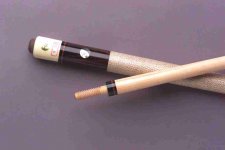B
Bruce S. de Lis
Guest
Recently noticed that many Three Cushion Players are using Cues with a Wood to Wood (Screw that is Wood into Wood) why is this so popular, and also why are these players playing with what I will call lighter Cue in the 16.0-17.5 Ounce weight range.
What is accomplished with this combination?
What is accomplished with this combination?
